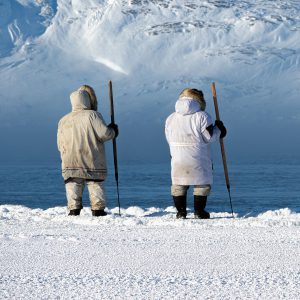Governance Structure
The Tasiujaqiuaqmiut Sheewetaganapoi Consortium Is A Diverse Network Of Stakeholders.
Unlike many existing governance structures, the Consortium is unique as its participants represent diverse structures including communities, boards and planning commissions, land holding organizations, NGOs, researchers and various levels of government. Membership is inclusionary, open to all those who support the vision statement, and is structured with a focus on communities and rights holders to ensure that smaller groups and communities are on equal footing with larger organizations.
Participants
Participation in the Consortium, its initiatives and events is open to anyone who respects and upholds the vision statement and guiding principles and indicates a desire to work together and respect for other Participants, their knowledge and opinions. As such “observer status” is not an option, either participants want to work together and show respect, or they do not, in which case they will not be considered participants.
The Steering Committee
The Steering Committee is composed of individuals from communities or organizations which have formally pledged their support for the Consortium. The Steering Committee guides the planning of events and working groups to ensure the Consortium’s efforts appropriately reflect and respond to community priorities and concerns. The internal governance for the Consortium is initially bottom-up, with communities setting the priorities and the Steering Committee helping to ensure these priorities are acted upon by the Working Groups and Secretariat.
The Secretariat
The Secretariat is responsible for the day-to-day administration of Consortium activities, including maintaining the website and social media accounts, conducting general outreach with community members and participants, preparing funding proposals and reporting, supporting scheduling and facilitating meetings for the Working Groups and Steering Committee. Under the direction of the Steering Committee and Working Groups, the Secretariat organizes meetings and events to advance the mission of the Consortium, including a Summit every four years and regional Roundtable meetings every second year.
Working Groups
Issue-specific Working Groups are established as a vehicle for maintaining momentum between in-person events and responding to shared priorities identified by communities across the Hudson Bay and James Bay region.
Communities who guide our work
Akulivik, Arviat, Attawapiskat, Baker Lake, Chesterfield Inlet, Chisasibi, Churchill, Coral Harbour, Eastmain, Fort Albany, Inukjuak, Ivujivik, Kangiqsujuaq, Kashechewan, Kuujjuaraapik, Moose Cree First Nation, Naujaat, Puvirnituq, Rankin Inlet, Salluit, Sanikiluaq, Umiujaq, Waskaganish, Weenusk/ Peawanuck, Wemindji, Whale Cove, Whapmagoostui, York Factory First Nation.
Guiding Principles
As a network, the Consortium shares a common vision and goals for environmental stewardship and sustainable development of the greater Hudson Bay-James Bay ecosystem. Consortium members conduct themselves ethically and fairly, prioritizing community well-being and environmental stewardship.

WE WILL:
- Honour and respect diverse cultures, values, and nature.
- Holistically manage Hudson Bay and James Bay as one interconnected ecosystem while being mindful of local biodiversity and communities.
- Uphold Indigenous rights, self-determination, and wisdom.
- Foster knowledge, communication, and cooperation while preserving the autonomy and impartiality of existing Indigenous and non-Indigenous governance structures.
- Provide a platform for all interested groups to discuss mutual interests, goals, and duties.
- Bridge Indigenous and scientific knowledge for robust stewardship of Hudson Bay-James Bay.
Our History
In 2018, the Tasiujaqiuamiut Sheewetaganpoi Consortium, formerly the Hudson Bay Consortium, was officially launched at the inaugural Hudson Bay Summit in Montreal.
After years of planning by local communities and Indigenous organizations, the Summit gathered 27 communities along with local representatives from Indigenous organizations, governments, academics, and non-profits. Their input from the summit informed our first Vision statement and Guiding Principles.
As an Indigenous-led charity with registered charitable purposes for coordinating environmental stewardship in the greater Hudson Bay region, the Arctic Eider Society has provided fundraising and administrative support for the Consortium leading up to and following its formal establishment at the 2018 Hudson Bay Summit. Under its Stewardship Pillar, the Arctic Eider Society provides administrative support to the Secretariat and participates with other organizations and communities on the Steering Committee of the Consortium. This approach has allowed the Consortium to operate under a shared vision statement and guiding principles, using a unique bottom-up approach with direction taken from the communities and participants.


